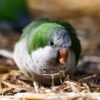- How Many Legs Do Ants Have? - 8 December 2023
- Pomeranian Pitbull Mix (PitPom) Appearance, Health Risk, Personality - 28 July 2023
- Is it Dangerous to Get Bitten by a Cobalt Blue Tarantula? - 28 May 2023
Ants are creatures that can be seen everywhere on the planet. They have six legs, just like other insects. One question always arises: “How many legs do ants have?” We will examine the intricacies of ant legs, their structure, and how many legs ants have. Do you know that, from foraging for food to defend their colonies, ants rely on their versatile legs to navigate in their surroundings? Let’s get into the blog about these interesting facts we don’t know about ants.
Do All Ants have 6 Legs?
We are familiar with all species that have 6 legs, and you may see variations in leg size and shape among different species. Some ants have longer legs to move faster. Other ants have shorter legs but are suitable for climbing or digging. They may have specialized legs to carry heavy loads or cling to vertical surfaces. It’s important to note that these variations are not the norm and are considered atypical occurrences. The vast range of ants, including most common species, have standard six-leg structures.
Structure of Ant Legs

The legs of ants are fascinating structures that are specialized for various functions. Their legs have common key features and adaptations:
1. Segmented Structure
Ant legs are composed of several segments or parts. These segments include the coxa, trochanter, femur, tibia, and tarsus. The tarsus is divided into smaller segments called tarsomeres.
2. Exoskeleton and Joints
Legs are covered by a hard exoskeleton to provide support and protection. They have flexible joints, called articulations, which allow the legs to move in different directions enabling ants to walk, run, climb and perform other tasks with agility.
3. Claws and Pads
Ants have tiny claws that help them to grip various surfaces, allowing them to navigate complex territory. Some ants have adhesive pads that help climb vertical surfaces or hang upside down.
4. Sensory Structures
Their legs are equipped with sensory organs that help ants to perceive their environment. These include sensory hairs that detect touch, vibrations, and chemical cues. These sensory cues are essential for communication and catching prey or predators.
5. Specialized Adaptations
Different ant species have unique adaptations in their legs to suit their lifestyles. Some ants have elongated legs that move swiftly across the ground.
Interesting Facts About Ant Legs That You May Not Know

Here are some of the interesting facts of ant legs that you may not know:
1. Ant legs can detect vibrations
They have sensory hairs called proprioceptors that can detect subtle variations. This ability helps ants communicate and navigate in the dark or environments with limited visibility.
2. Ants can lift 50 times their weight using their legs
They are known for their impressive strength relative to their size. Ants can lift their objects weighing up to 50 times their body weight using their legs. This incredible feat is made possible by the efficient design of their leg muscles. They can carry heavy loads such as transporting food, building nests, and maintaining colonies.
3. Leg Length can vary within the colony
Some ant species can be variations in leg length among individuals within the same colony. This difference in leg length may be related to specific tasks or roles within the colony hierarchy.
4. Legs can be adapted for different purposes
They are highly easy-going and can be modified to serve various purposes. Different ant species exhibit specific leg adaptations that align with their unique roles. Their legs can be modified for other purposes:
- Digging Legs: Certain ants construct intricate underground nests and possess legs with modified structures for digging. These legs could be broader and stronger to excavate soil and create tunnels efficiently.
- Climbing legs: Some ant species inhabit trees or plants that have evolved legs for climbing. These legs might be longer and equipped with curved claws and adhesive pads, allowing ants to navigate vertical surfaces easily.
- Hunting Legs: Predatory ant species have legs that are designed for capturing and immobilizing prey. These legs have sharp spines or serrated edges to hold onto struggling prey.
- Grooming Legs: They engage in grooming behaviors to keep themselves clean. Grooming legs have specialized structures such as fine bristles to remove dirt, debris, and parasites from their bodies.
- Swimming Legs: Some ants live in aquatic or semi-aquatic environments with expanded segments acting like paddles to swim perfectly.
Ants are swift runners
These are among those insect species that run quickly. Many ant species have evolved to be quick and agile, allowing them to perform various tasks efficiently. Their quick-running abilities have several essential functions within the environment.
Ant’s legs have sensory organs
The sensory organs on their legs are essential in interacting with environments and other ants. These specialized structures, known as sensilla, enable ants to detect various chemical cues and physical stimuli.
Ants can recover from injured legs
Their legs get injured during fights. Ants aren’t able to accomplish this on their own. Fellow ants, known as nursing ants, play an important role. These nursing ants transport the injured ants back to the nest and cleanse their wounds using unique salvia with antimicrobial properties to safeguard them from infections.
Ants can jump on their legs
Some species of ants can jump using their legs. The unique capability allows them to perform impressive leaps in other activities, such as escaping predators or navigating surroundings.
Also Read: Is it Dangerous to Get Bitten by a Cobalt Blue Tarantula?
Wrap Up
These are certain aspects of ants’ legs. We have explained everything in detail related to the question, “How many legs does an ant have?” All ant species have the same number of legs. They have variations in leg size and shape among different species. The complex structure of ant legs allows the tiny insects to move, climb, dig, and carry objects. Do let us know how you found this blog.
















